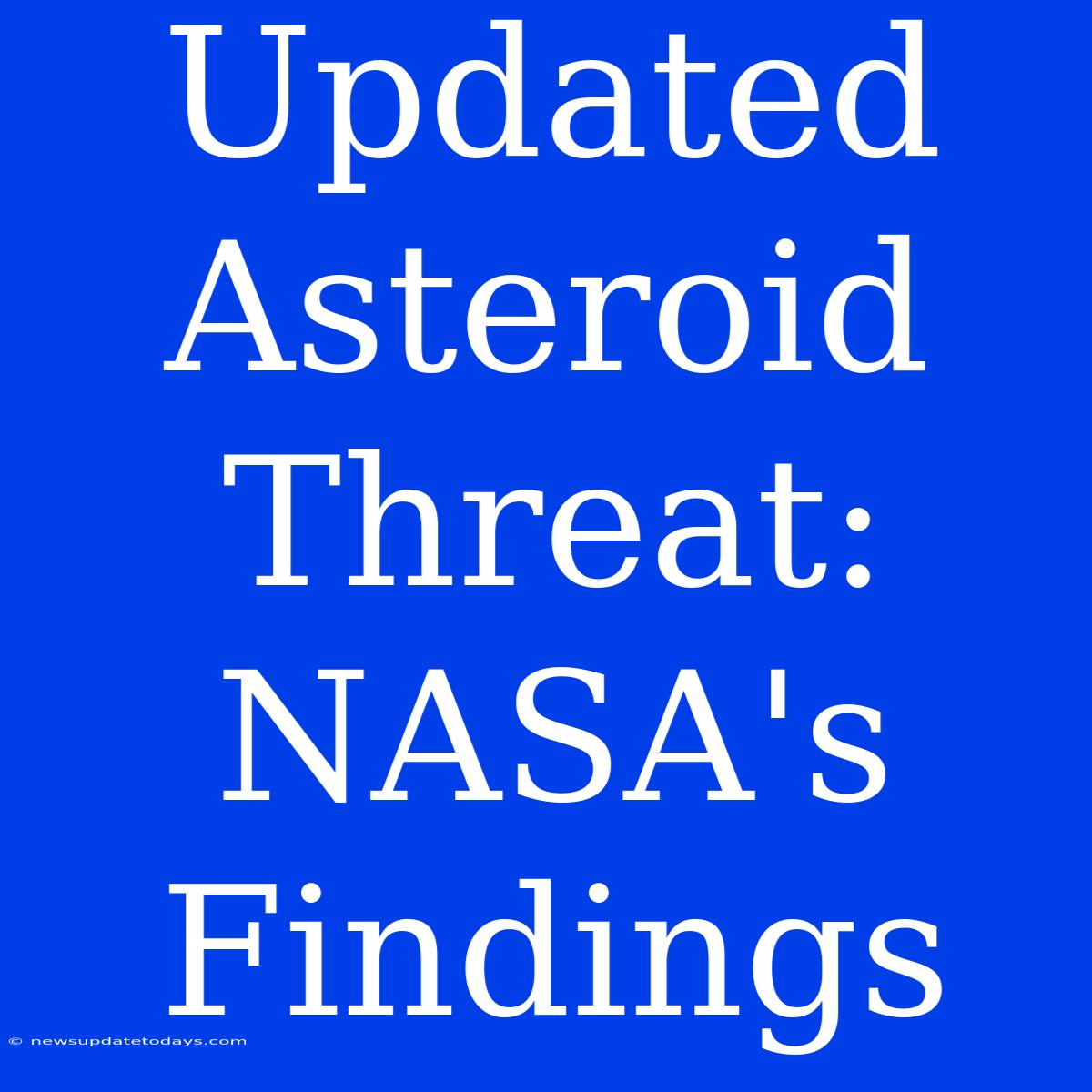Updated Asteroid Threat: NASA's Latest Findings & What They Mean
The threat of an asteroid impact, once relegated to science fiction, is now a subject of serious scientific study and planetary defense planning. NASA, at the forefront of this effort, constantly monitors near-Earth objects (NEOs) and regularly updates its assessments of potential hazards. Recent findings shed new light on the nature of this threat and the advancements being made to mitigate it.
Understanding the NEO Threat
Near-Earth objects include asteroids and comets that orbit the sun and come within a certain distance of Earth's orbit. While the vast majority pose no immediate threat, even a relatively small asteroid could cause significant regional damage upon impact. Larger asteroids, thankfully rare, present a global catastrophe risk.
NASA's Planetary Defense Coordination Office (PDCO) uses a sophisticated network of ground-based telescopes to detect, track, and characterize NEOs. This data feeds into complex models that predict their future trajectories and assess the probability of an impact. The accuracy of these predictions continues to improve with advancements in technology and computational power.
NASA's Recent Discoveries and Updated Assessments
Recent findings from NASA highlight several key areas:
- Increased Detection Rates: Thanks to improved technology, the number of detected NEOs is steadily increasing. This allows for earlier identification of potential threats, giving more time for planning and mitigation strategies.
- Improved Characterization: NASA is not only identifying NEOs, but also characterizing them. Understanding their size, composition, and trajectory is crucial for determining the potential impact severity and for planning effective deflection strategies.
- Refined Impact Probabilities: With more data, NASA can refine its estimates of the probability of an impact for known NEOs. While the overall risk remains low, these refined estimates allow for more informed decision-making regarding potential mitigation efforts.
- Advances in Deflection Technologies: NASA is actively researching and developing various asteroid deflection techniques, including kinetic impactors (like the DART mission) and gravity tractors. These technologies aim to nudge potentially hazardous asteroids off their collision course with Earth.
What Does This Mean for Us?
While the probability of a significant asteroid impact in the near future remains relatively low, the potential consequences are so severe that continued vigilance and proactive planning are essential. NASA's ongoing efforts are crucial not only for detecting and tracking NEOs but also for developing and testing the technologies needed to deflect any potentially hazardous objects.
This is not a cause for alarm, but a testament to humanity's growing awareness and capacity to address significant global challenges. By continuing to invest in planetary defense research and technology, we are proactively safeguarding our planet and future generations.
Keywords:
Asteroid, NASA, Planetary Defense, Near-Earth Objects (NEOs), Asteroid Impact, Asteroid Deflection, DART Mission, Planetary Defense Coordination Office (PDCO), Space Debris, Space Exploration, Space Safety
Future Research and Development
Future research will focus on:
- Improving detection capabilities: The goal is to detect even smaller NEOs, providing even more lead time for mitigation.
- Developing more efficient deflection technologies: Research continues into more efficient and reliable deflection methods.
- International collaboration: Global cooperation is essential for a comprehensive planetary defense strategy.
By understanding the threats and investing in research and development, we can effectively minimize the risk of asteroid impact and protect our planet. The ongoing work of NASA and other space agencies is a testament to our commitment to safeguarding Earth's future.

